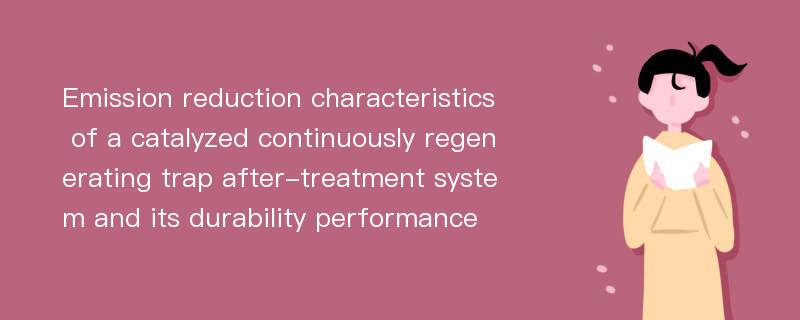
论文摘要
The primary purpose of this study was to investigate the effect of a catalyzed continuously regenerating trap(CCRT)system composed of a diesel oxidation catalyst(DOC)and a catalyzed diesel particulate filter(CDPF)on the main gaseous and particulate emissions from an urban diesel bus,as well as the durability performance of the CCRT system.Experiments were conducted based on a heavy chassis dynamometer,and a laboratory activity test as well as X-ray photoelectron spectroscopy(XPS)test were applied to evaluate the changes of the aged CCRT catalyst.Results showed that the CCRT could reduce the CO by 71.5%and the total hydrocarbons(THC)by 88.9%,and meanwhile promote the oxidation of NO.However,the conversion rates for CO and THC dropped to 25.1%and 55.1%,respectively,after the CCRT was used for one year(~60,000 km),and the NO oxidation was also weakened.For particulate emissions,the CCRT could reduce 97.4%of the particle mass(PM)and almost 100%of the particle number(PN).The aging of the CCRT resulted in a reduced PM trapping efficiency but had no observable effect on the PN;however,it increased the proportion of nucleation mode particles.The activity test results indicated that the deterioration of the CCRT was directly relevant to the increase in the light-off temperatures of the catalyst for CO,C3H8 and NO2.In addition,the decreased concentrations of the active components Pt2+ and Pt4+ in the catalyst are also important factors in the CCRT deterioration.
论文目录
文章来源
类型: 期刊论文
作者: Yunhua Zhang,Diming Lou,Piqiang Tan,Zhiyuan Hu,Hu Li
来源: Journal of Environmental Sciences 2019年10期
年度: 2019
分类: 工程科技Ⅰ辑
专业: 环境科学与资源利用
单位: School of Automotive studies, Tongji University,School of Chemical and Process Engineering, Faculty of Engineering, University of Leeds
基金: supported by the National Key Research and Development Program of China (No. YS2017ZY020019),Research Project of Shanghai Committee of Science and Technology (No. 18DZ1202900),the China Scholarship Council (No. 201806260133)
分类号: X734.2
页码: 166-173
总页数: 8
文件大小: 1417K
下载量: 10
